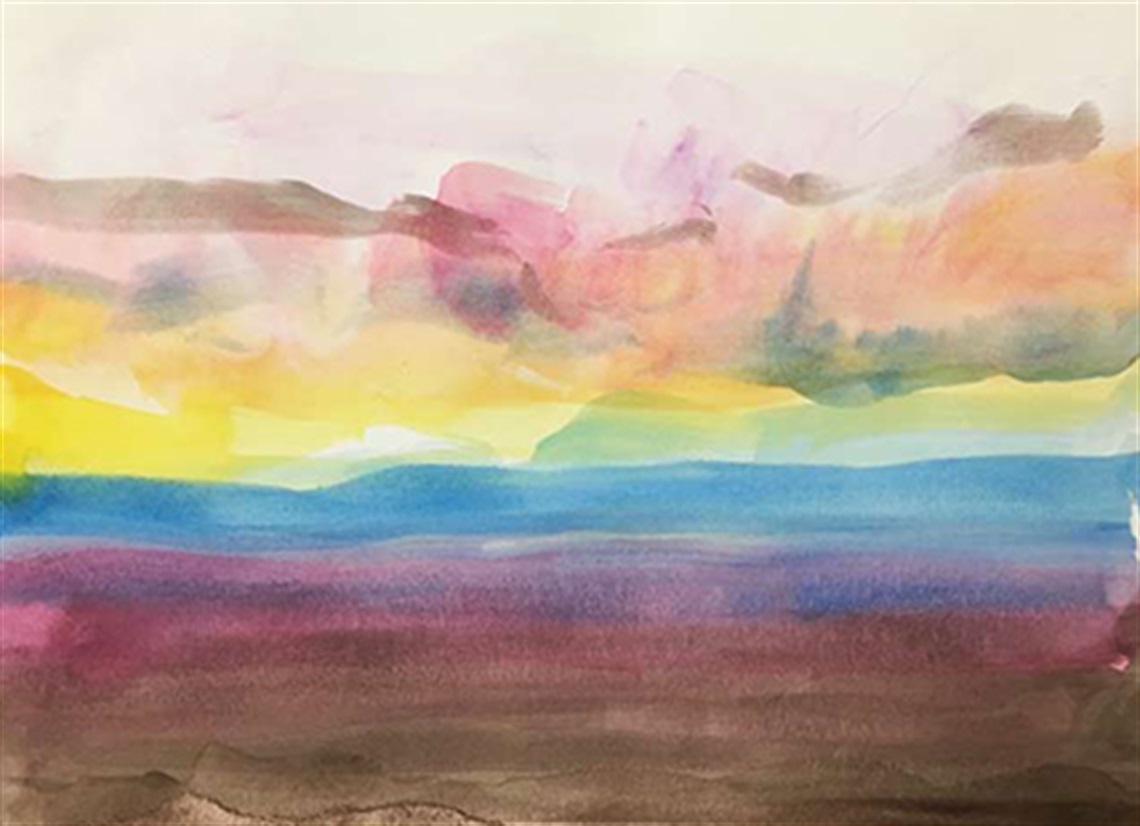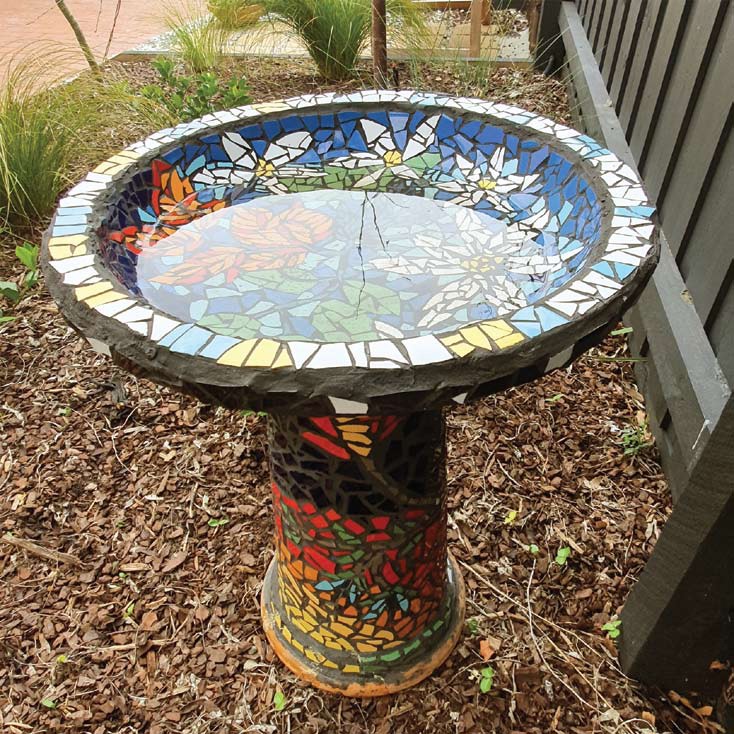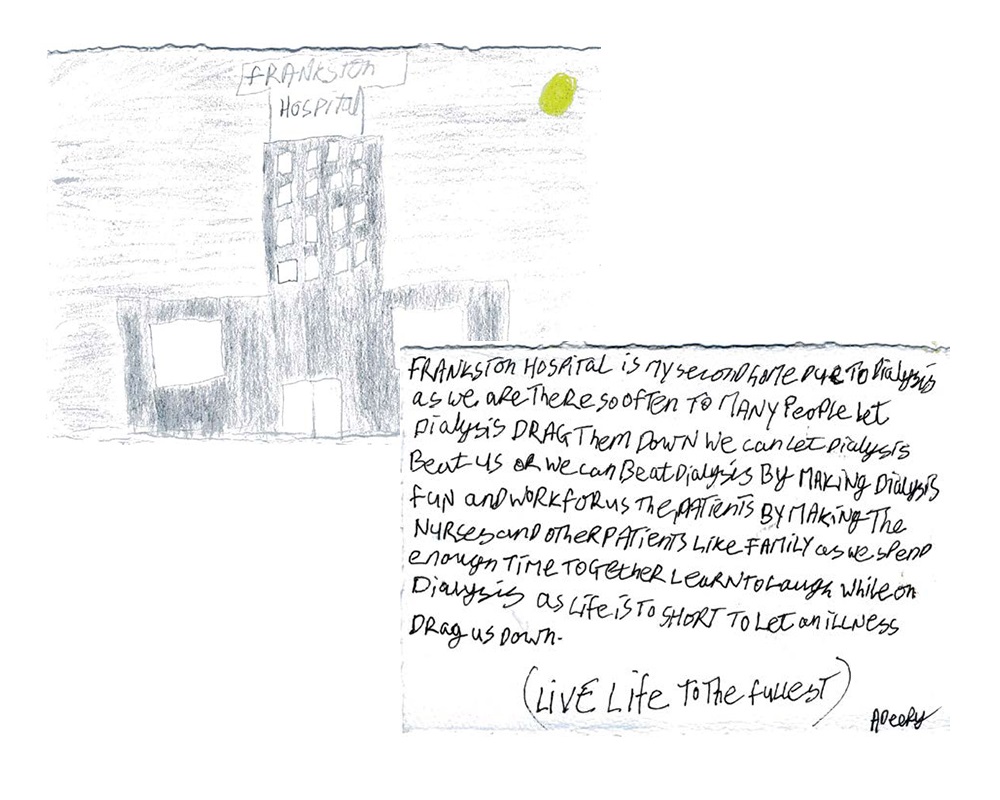Arts Access at FAC: DialysArt
Published on 13 April 2021

As an all-inclusive venue, the FAC is passionate about providing arts opportunities for all abilities in the community. DialysArt is a hospital-based art therapy program for people undertaking dialysis in the Peninsula Health Haemodialysis unit at Frankston Hospital. Founded in 2011 by art therapist Melissa Banks in collaboration with Sandra MacDonald, Unit Manager of the Haemodialysis Services of Frankston Hospital; DialysArt participants discuss art, learn new drawing and painting techniques, explore colour and use recycled materials to create art. The program continues today facilitated by art therapists, Jennie Wragge and Lorin Randall, whom we spoke with to learn more about how DialysArt operates.
DialysArt is co-funded by Frankston Arts Centre and Peninsula Health and runs twice a week out of the hospital. The program is currently on hold due to Covid19 restrictions, but will hopefully resume soon.
What does a DialysArt session usually involve?
Jennie: To set the scene, most patients visit the Haemodialysis Unit for a five-hour Dialysis treatment session three times per week on alternate days. In simple terms, patients sit/lie in their ’chair’ for the whole of this time, connected via tubes from and to an arm or their chest to a Dialysis machine which cleans their blood – the job that for well people, the kidneys would normally do. It is a hard gig. DialysArt is a visual arts program offered once per week by a partnership between Peninsula Health and Frankston Arts Centre to promote health and wellbeing for dialysis patients.
A DialysArt session begins by checking in with and having a chat with all patients in the Unit to establish who would like to be involved on the day and what they would like to do. The required art materials and equipment are set up for each participating patient in front of or beside their chair and art making takes place for as long as the patient feels up to it within a generally two-hour session. Artworks are shared with all patients and feedback to the artist is encouraged/shared.
Participation in the program varies between individuals. There is no compulsion to participate. Some patients are regular participants; others participate now and then, and some have never been involved. Art making is always offered to all patients and staff may also have a quick dabble at times. Some patients work on an ongoing individual project; others work on a series of pieces mostly with the same medium, others do a one-off. We sometimes do a group painting or work on pieces for a more ‘official’ shared DialysArt project.
Artistic skill is most definitely not required and there is no pressure to make ‘beautiful’ art – all art produced is perfectly fine, accepted and appreciated. Ideas, inspiration, instruction, suggestions, encouragement and assistance are always available. Having said this though, I strongly believe that, despite the hindrances that dialysis treatment can dictate, it is important that the artwork is always that of the patient. It may mean that modifications in the art making process are necessary and requires a problem-solving approach. It also makes the art produced more beautiful and precious.

How does someone get involved in doing DialysArt?
Lorin: We check-in with all patients at the commencement and end of each session, to discuss health and wellbeing, the desire to participate in creative activities and/or the stage their project is at. We always extend gentle enquiry to new patients and those that have not yet engaged with art making projects; some just enjoy having a chat and that’s ok too. We’re always on the lookout for new and interesting concepts, approaches and the challenges that some patients thrive on. No experience is necessary just a willingness to have a go, relax and play.
What happens with the patients’ artworks?
Lorin: All creative work remains the property of the patient/artist until gifted or sold. We collaborate with patients, family, carers and stakeholders regularly to create ongoing promotional activities, exhibitions and opportunities to get the message out into the wider community about the importance of Dialysis treatments. This is mutually beneficial for everyone involved promoting the therapeutic and mental wellness aspects, celebrating individual personal achievements, developing resilience and supporting awareness for future treatments, organ donation and fund-raising ventures.
Jennie: All artworks are photographed and imagery may be used in a DialysArt Project such as a calendar or greeting cards. Some artists choose to store their works on site in the Dialysis Unit; others choose to take their work home. Either way, art may later be exhibited in a DialysArt group exhibition or on the walls of the Dialysis Unit.
How does DialysArt affect the lives of the people involved?
Lorin: Evidence based, good practice indicates Creative Therapy sessions continue to have a significantly positive impact on both the psychological and physical health of patients. I have observed increased trust in the creative process leading to greater enthusiasm and risk taking to advance individuals skills, the complexity of projects ongoing, experimental mediums, and the determination to overcome presenting health issues at any given time in order to be well enough to participate in the next week’s session.
Jennie: At the very least, for almost all patient-artists, DialysArt provides brief respite from their condition and a distraction from their treatment, helping to pass the time quickly and pleasurably. Most find it to be very relaxing. DialysArt also provides an opportunity for communication and social interaction between patients and with Unit staff.
Participation in DialysArt also elicits feelings of pride and achievement for patients. For some it is through discovering and being surprised by artistic abilities they did not think they had. For others it is by painstakingly completing a piece of art or mastering a new medium – or when their art is put out into the public realm either in a group DialysArt exhibition or one of our printed productions.
Can you share with us the benefits the program has had on the wellbeing of participants?
Lorin: There have been many personal discoveries and disclosures. Some patients have experienced their very first artistic creation, first published work, or first exhibition. Some have mastered their choice of medium and then have gone on to try a new technique. The delight they take in having their families and friends share in supporting their creative endeavours, fund raising efforts, participating in seasonal activities and the treasured gifts that remains when their loved one passes.
We now produce annual DialysArt Calendars and Christmas Cards, photographing and show casing the patients’ artwork, which are then distributed and sold as a fundraising benefit. Last year’s art exhibition collaborated with two additional health/wellness groups, forming a large community awareness program that was funded and supported by Frankston Arts Centre.
Jennie: One participant, grieving the loss of his artist-mother, finds healing and connection to her in DialysArt through learning to paint with the medium she used to paint with. On rare occasions, when he has become overwhelmed with grief and other emotions, he has found relief, expressed his emotions, gained insights and developed personal imagery through art-based interventions.
What has the program has given back to you personally as a facilitator?
Lorin: Haemodialysis units are unique environments with equally unique and sometimes extraordinary human beings receiving this life saving kidney treatment. There are patients in this unit that have been receiving this type of treatment for over twenty years, and there are patients that don’t expect to make thirty. All face each day with courage, determination, humour, sharing, caring, grief, empathy and renewed vigour for life. Each their own individual personalities, they are all hugely inspirational to me on both a personal and professional levels.

Artwork credits:
Top: Andrew “Sunset in the Desert” 2019 - Watercolour
Mid: Group Collaboration “Mosaic Bird Bath” 2019 - Mixed Media
Bottom: Alan “Live Life to the Fullest” 2019 - Graphite on Parchment.